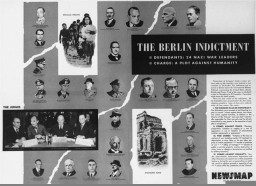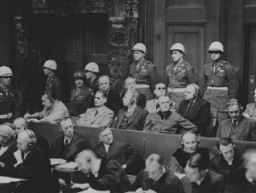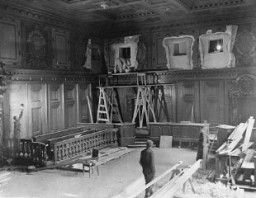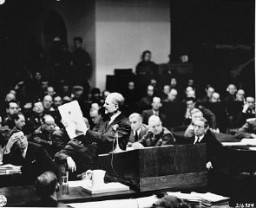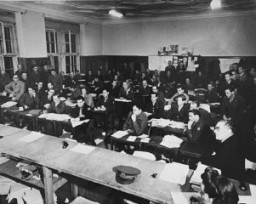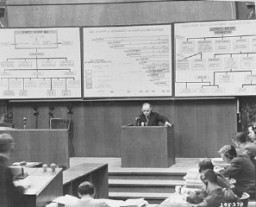
Translation in the Courtroom
The Nuremberg trials were an early experiment in simultaneous translation. The charter of the International Military Tribunal stated that the defendants had the right to a fair trial and that, accordingly, all proceedings be translated into a language that the defendants understood. Each of the four international judges also had to understand the proceedings. The US company IBM developed a translation system based upon an earlier translation system it had installed at the League of Nations in 1931. In this earlier system, speeches were pre-translated and then read simultaneously in the various languages.
At the Nuremberg tribunal, five translation channels were used. The first channel contained the verbatim transmission of the speaker. The other channels were translations in English, Russian, French, and German. Each participant in the trial had a set of headphones. There were six microphones placed in the courtroom—one for each judge, the witness stand, and the speaker's podium. Three teams of interpreters worked under the direction of US Army Lieutenant Colonel Leon Dostert and US Navy Lieutenant Commander Alfred Steer. Two teams would alternate shifts in the courtroom, while a third team on standby sat in another room listening to the proceedings. A fourth team of auxiliary translators was on hand for other languages such as Polish and Yiddish, and two other interpreters sat on a bench behind the judges.
Because of these complex translation needs, the trial could not proceed any faster than 60 words per minute. A monitor operating a control switch in the interpreting section would flash a yellow light to notify the speaker if he was speaking too quickly, or a red light indicating that he should stop and repeat what he had just said. IBM provided the new technology free of charge for the trial, provided that the US government pay the cost of shipping and installation. Through the demonstrated success of the system at Nuremberg, IBM was later able to sell the system for use at the United Nations.
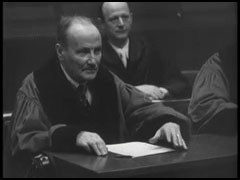
Series: International Military Tribunal
Critical Thinking Questions
- Investigate some of the ways in which the International Military Tribunal was a major model for the future.
- The International Military Tribunal at Nuremberg is among the best known postwar trials. Investigate trials conducted by other countries after the Holocaust.
- Beyond the verdicts, what impact can trials have?

